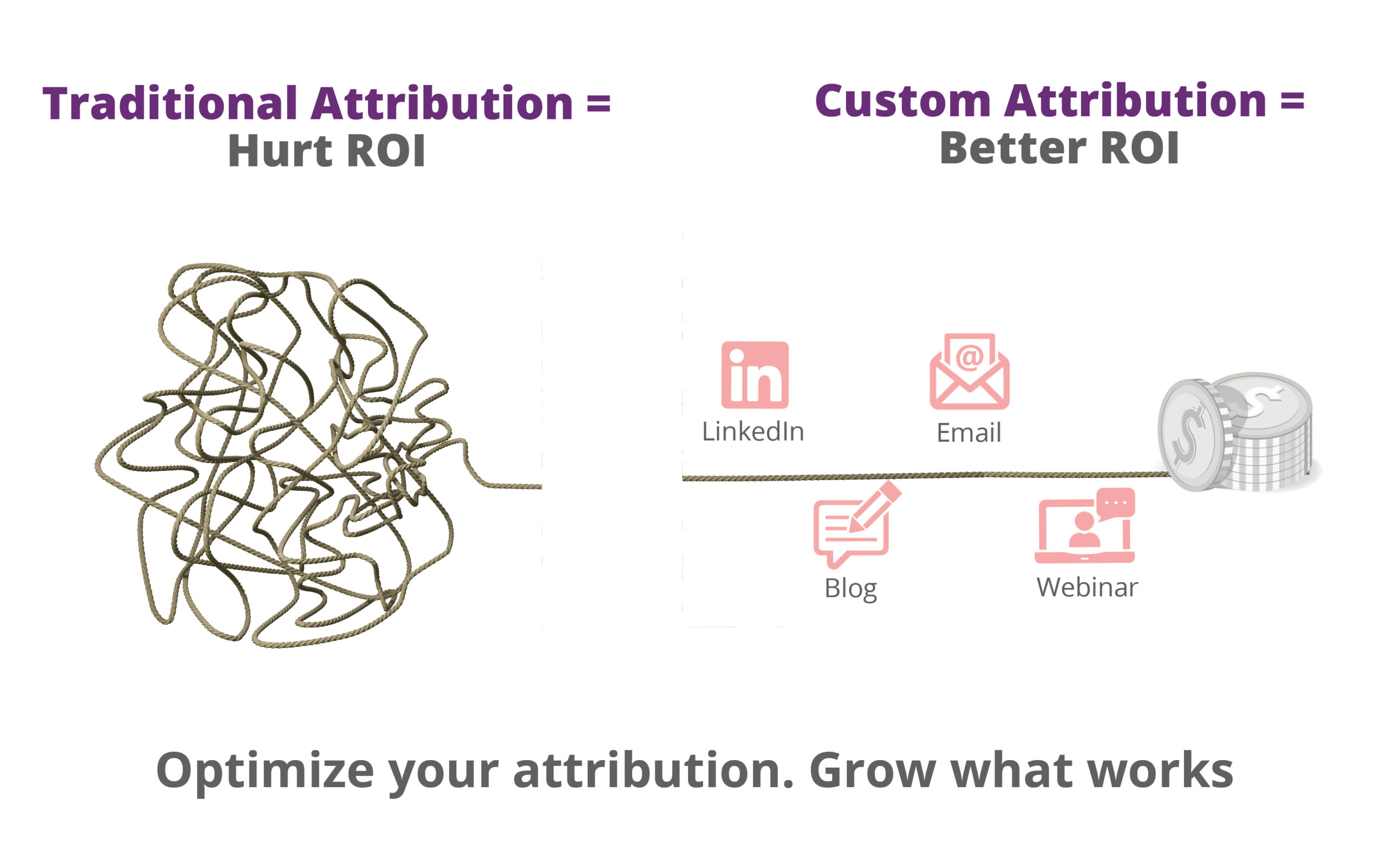Ever thought what would be the perfect tool for Analytics tracking and traffic analysis of your website? In this article, I will discuss an in-depth comparison between three most widely used analytics tools, Mixpanel, Kissmetrics and Amplitude after completing 50+ implementations with them.
When we talk about traffic analysis tools, Google Analytics is the most popular one. According to W3techs, Google Analytics has 83.5% market share but why is there still a need for other tools like Mixpanel, Kissmetrics and Amplitude?
The foremost reason which makes the previously mentioned tools standout is their core ‘user tracking’ feature. They are primarily built to track users while GA by default is more focused on sessions and user tracking comes much later. Although Google has worked a lot on overcoming this snag but still it is not a first class citizen compared to others in the market.
The below tools highly focus on user level tracking, are event centric platforms, can create funnels, visualize trends and are more targeted than Google Analytics.
Although these tools are a lot similar among themselves but they are not exactly the same so I thought I'd take this opportunity to compare and contrast them and help you decide.
Mixpanel vs Kissmetrics vs Amplitude - Quick Overview:
Mixpanel -- Is more focused on mobile technology and offers A/B testing, push notifications and surveys on mobile level. It is fast but expensive!
Kissmetrics -- Best suited for marketers and the feature that makes it unique is its ability to keep user identity across the entire conversion funnel as well its people level tracking of all actions.
Amplitude -- Offers pre-computation and cheap storage. It is pretty fast and cheaper in most case to the above tools.
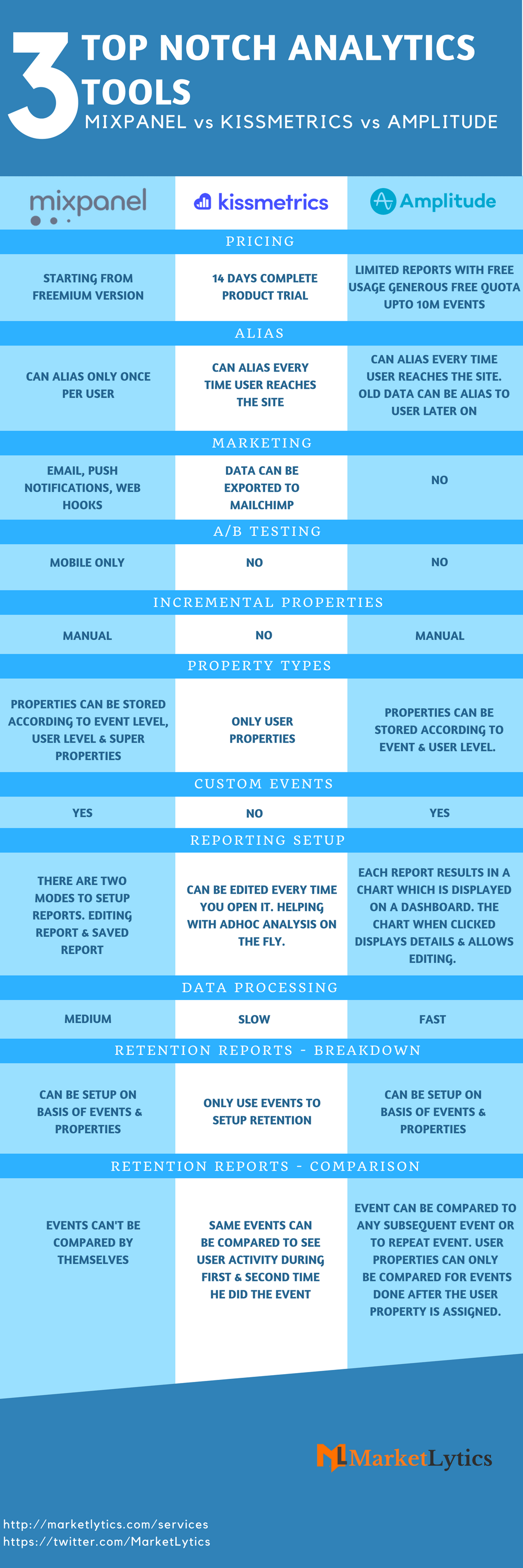
I hope this cleared your mind, if the above stuff sounded like buzzwords (alias what?), keep reading for an in-depth review of the key features mentioned above.
Alias --
As I discussed above that these tools are more focused on user tracking and are event centric. An alias is the ability to tie the users anonymous activity (done when the user has not logged in) to their activity after signup or login.
On web this is very crucial as in most visits the user revisiting the site is anonymous before they login and most users continue to browse your website (or even convert) without proper registration. So this might give you an idea about the importance and need of the tools we are about to get into.
Mixpanel: By using mixpanel.alias() and mixpanel.identify(), you can keep the user identities consistent throughout their interaction with your website. From anonymous interactions, all the way to signup and subsequent logins.
On the very first user interaction, Mixpanel assigns a unique id known as Mixpanel distinct_id. So all the interactions of this user before the signup will be recorded under distinct_id.
When the same user signs up for an account, you can call the mixpanel.alias() function to give the user a defined id. Now everytime the user logins you will call the mixpanel.identify() function to see the previous interactions. You can click here to understand the alias and identify story for Mixpanel.
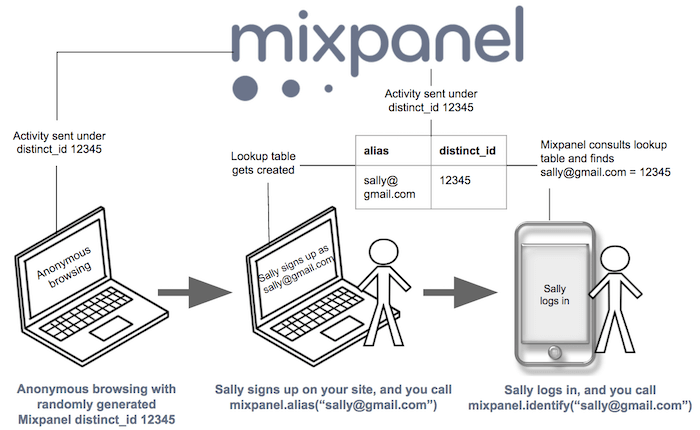
Source: Mixpanel
With Mixpanel you can assign every user an alias only once. Which means you can not change it after a user is given an alias.
Kissmetrics: Using Kissmetrics you get a certain edge and you can alias every time a user visits your site.
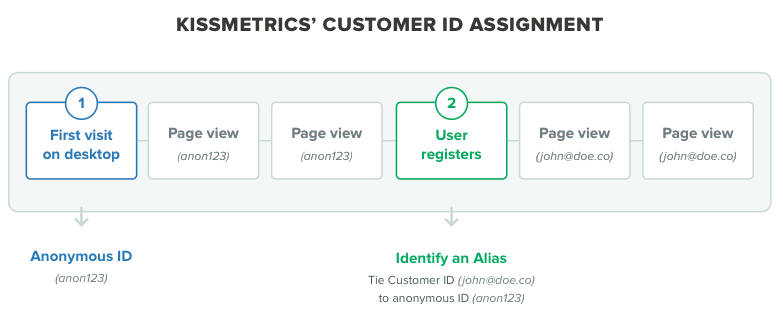
source: Kissmetrics
There is a slight difference in aliasing anonymous users and logged in users. Here is a brief distinction between the two to help you better understand.
Amplitude: In Amplitude you can alias every time a user visits your site and if you have any historic data you can alias to users later on.
A/B Testing --
A/B testing is sometimes called split test and is done to compare two versions of single page to see which performs better.
A/B testing is not available in either of the tools, but Mixpanel provides this feature for mobile apps. Though the feature is soon to be discontinued.
Incremental Properties --
Incremental properties are used whenever we have to maintain a count. For instance, count of those customers who have purchased more than three times or how many of the customers are receiving invitations.
Mixpanel and Amplitude both provide a manual way to set incremental properties and hence keep record of customers showing more interest in your product.
Property Types:
Property refers to any facts about a user or event. It provides additional context around the basic data that you have of them. Mixpanel, Kissmetrics and Amplitude provide different ways to store a property.
Mixpanel: In Mixpanel properties can be stored according to event properties, user properties and super properties. With Mixpanel properties you can slice and dice, filter, segment or divide your data to get actionable insights.
This provides a lot of granular control to how you want to store data.
Kissmetrics: Kissmetrics provides only user type properties.
With Kissmetrics properties you can only get more information about each user. You can use it to segment people into different groups and understand where they came from and what they did.
This can be a good thing and a bad thing, I say good because every action a user does is available to be analyzed across all other actions but the latter is because it creates a lot of noise and any property can only hold one value at a time so it’s hard to see change of properties.
Amplitude: there are two types of properties in Amplitude - User properties and event properties
User properties reflect the current state of user and are attributes of user. Whereas, event properties reflect the state at which the event was triggered and are associated to a particular event.
Custom Events
Custom events are events that you create yourself and these can be based on a combination of multiple events which you are already tracking and making it easy for yourself to create new KPIs without adding additional tracking. You can only create custom events in Mixpanel and Amplitude.
Mixpanel: A custom event in Mixpanel can be defined using the existing events and properties. Using custom events you can define a group of users the way you like.
Amplitude: Amplitude also allows you to build custom events using other events and properties.
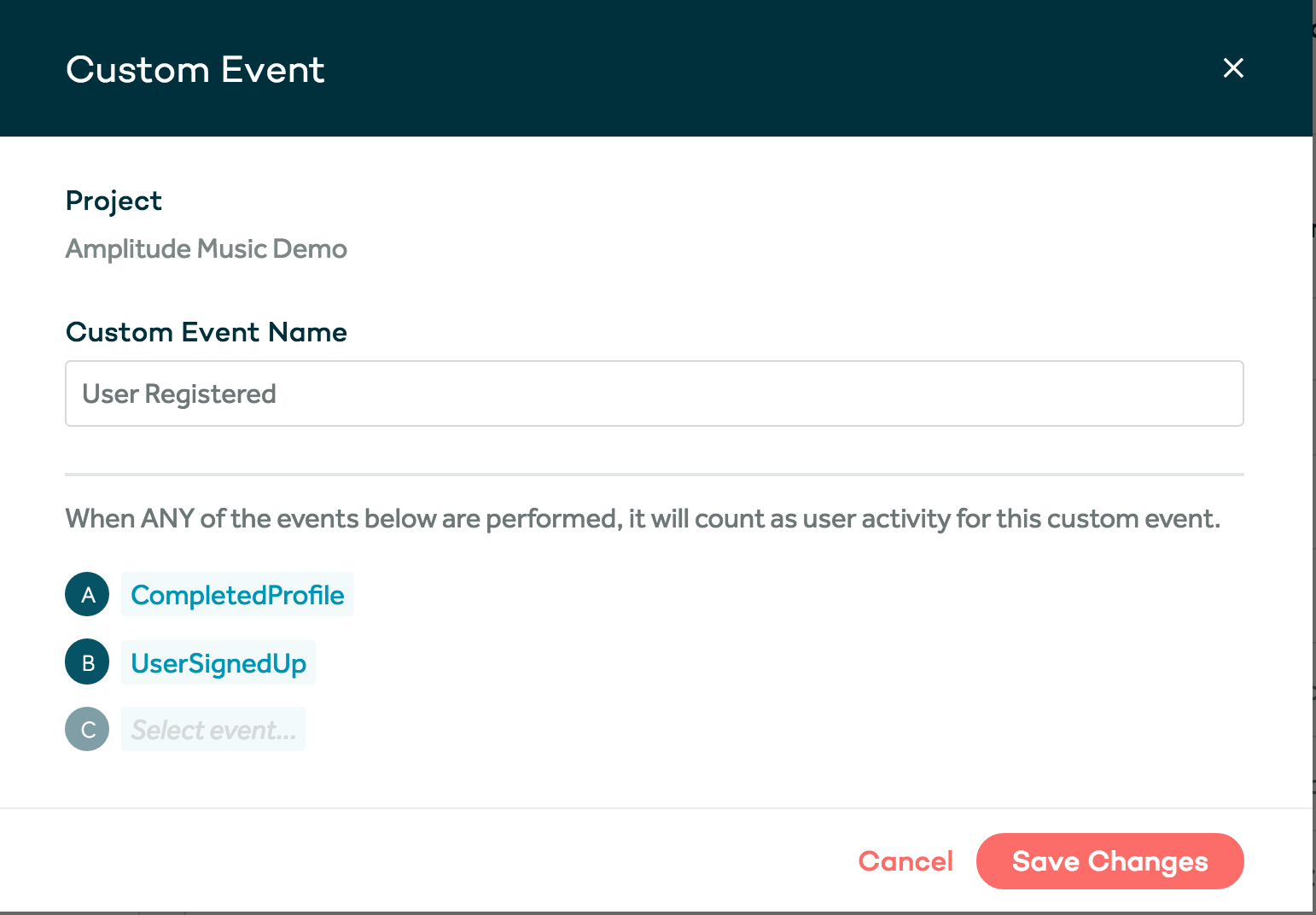
source: Amplitude
You can setup custom events to differentiate between users who did or didn’t do a specific action.
Retention Reports - Breakdown
All of the three tools provides a feature to build retention reports. Mixpanel and Amplitude allows you to set up retention reports based on events and properties while Kissmetrics generates retention reports based on events.
Making your Choice
I think uptil now, I have made the decision making process a bit easier for you and by now you might have some idea about which tool you should choose.
Choosing a user analysis tool involves multiple factors. What kind of business you have?, what kind of customers you expect?, what major actions are important to capture?, and finally your budget.
Is it possible to work with all of them?
Yes, if you have an enterprise business or want to try all the tools before deciding, look no further than Segment. It allows you to collect your customer data from multiple integrations and send it anywhere. I wrote a quick overview about segment here.
Have you made your choice yet?
Need help making a decision or supporting your implementation of these platforms? Check out MarketLytics services or send me a quick note.



